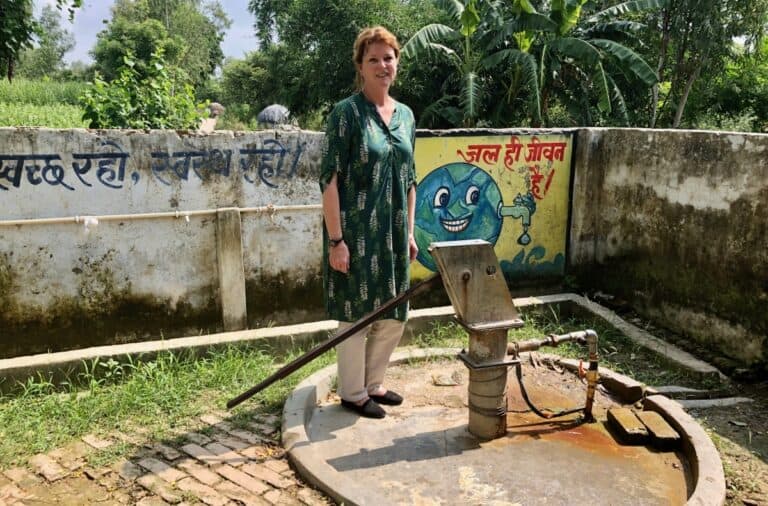Photo: Image courtesy of Jenna Davis
Accelerating Water Solutions in the U.S. and abroad
If you are like the majority of Americans, you don’t think much of the water you use to drink, bathe, and do other basic necessities. For the approximately two billion people who live in places where water sources are contaminated with feces, it can be a matter of life and death: contaminated drinking water is estimated to cause 485,000 diarrheal deaths each year, most of them children, according to the World Health Organization.
Jenna Davis, director of Stanford’s Program on Water, Health and Development is one of several Stanford water experts in New York City this week for the UN 2023 Water Conference – the first global water gathering in nearly 50 years. The gathering is expected to result in commitments from governments, civil society and private sector groups on ways to “accelerate our progress towards water-related goals and targets.” On March 22, World Water Day, Davis discussed surprising freshwater challenges and potential solutions in the U.S. and abroad.
What might the average person be surprised to learn about water and sanitation in the U.S.?
Although most Americans have great water and sanitation services, recent failures such as lead contamination of water supplies in Flint, Michigan, remind us that not all communities have that luxury. People might also be surprised to know that contaminants like lead are regulated one at a time. For example, having a low concentration of copper in my water supply is not known to be a health risk. But we don’t know much about my health risk if my water also contains below-threshold levels of nitrates, cyanide, and chromium. Bill Mitch, a professor of civil and environmental engineering at Stanford, has been looking at this issue for chemical contaminants that are created during water treatment processes. Only a handful of these are regulated so far. Bill’s work is showing that many unregulated chemicals may have larger health risks than the ones we regulate […]

